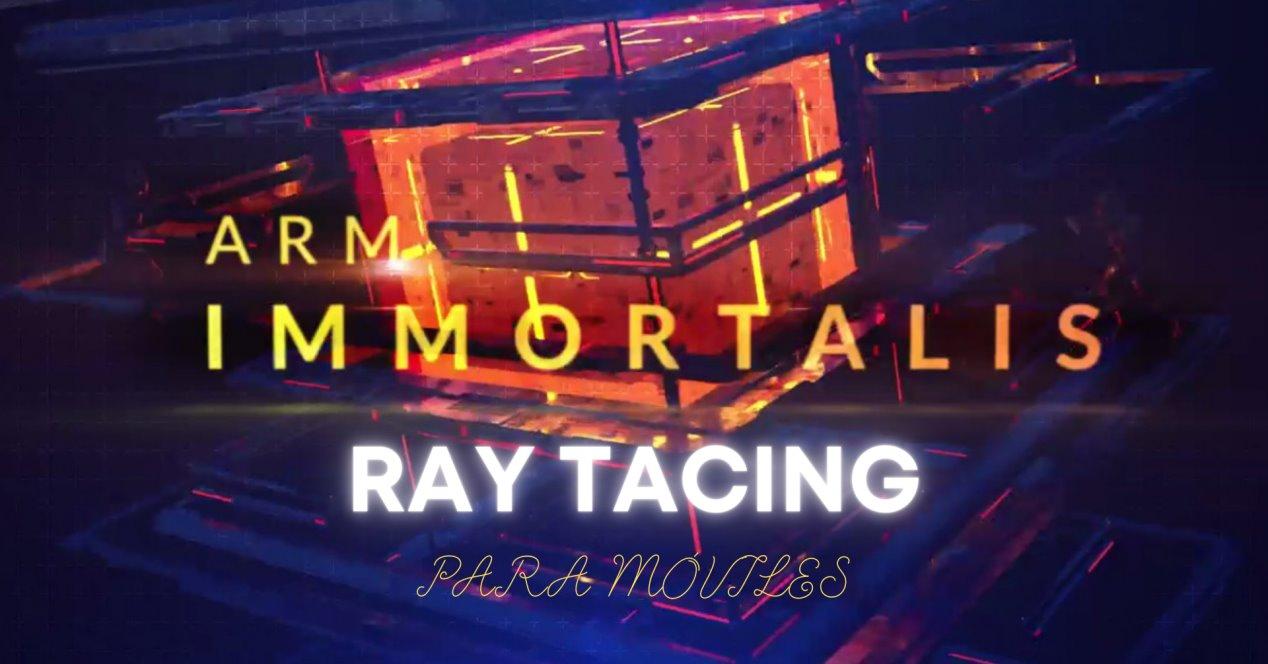For a long time, we tried to sell that mobile phones are a great platform for playing video games. Today ARM, designer of architectures mainly for smartphones, is raising the bar. They announced their download Immortal-G715whose mission is to carry the tRay Tracing technology to mobilessomething that seems unrealistic.
Ray Tracing technology or Ray Tracing, was an important bet of NVIDIA that everyone followed. Although this technology has been around for years, the challenge was to be able to use it in real time. This technology requires enormous computing power, so much so that its use involves a FPS drop of 50% or more.
ARM Immortalis-G715, a graph that brings Ray Tracing to mobiles
Despite initial criticism, Ray Tracing in games is here to stay. AMD has adopted it and is even present in some games of thea PS5 and Xbox series
It is therefore not surprising that ARMS announced their Immortal-G715 GPUwho will carry Ray tracing to mobile. Although there are many shortcomings in this announcement, since the company has hardly given any information about it.
We must point out that Nvidia uses DLSS to compensate for the FPS losses generated by Ray Tracing. AMD For his part, he uses technology FSR which is open source and does not require any specific hardware. Intelfor its part, has developedthe XeSSwhich is quite similar to AMD’s solution.
Naturally, this announcement casts enormous doubt, since the Ray tracing is heavy technology. It looks like ARM Immortalis would support Variable Rate Shading (VRS) and Adaptive Performance, but that’s not certain. It could also take advantage of AMD FSR, which is open source and doesn’t require dedicated hardware to run.
Demos without any information
ARM published videos about it, but these have no point of reference and FPS counters are not included. You have to keep in mind that the graphics of smartphones are not as rich as on PC or consoles. But it’s an interesting indicator that ARM hasn’t provided data, which could indicate poor performance.
The videos obviously show how much richer the images are with this working technology. We see how the lighting and shadows make the scenes more realistic. Now one thing is a demo and another is this technology in games.
We prefer to be very careful, even if since ARMS They show a lot more confident“Our partners are ready, the hardware is ready, and the developer ecosystem is ready.”
Something quite interesting is that the dedicated ray tracing hardware takes up only 4% of Immortalis GPU area. It is mentioned that it will support VRS and new unspecified runtime technologies.
Trying to “revive” the game on a smartphone
Immortal-G715 would not be integrated into the smartphone before early 2023. We have plenty of time to see mobiles with these graphics and we can see the first performance tests. But we better not expect much, because playing on mobile (dismissing typical casual games) doesn’t make much sense.
Along with these graphs with Ray Tracing will come the Mal-G715 and Mal-G6 What will support VRS and new execution technologies, but not ray tracing. Note that both of these Mali and Immortalis use the fourth generation Valhalla architecture.
The normal thing is that at CES and MWC of 2023 more information is given and we see the first smartphones that support this technology. We recommend that you buy kitchen gloves, so that you can hold the smartphone when playing with Ray Tracing.









